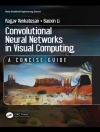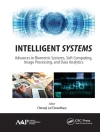Addressing the fundamental technologies and theories associated with designing complex communications systems and networks,
Principles of Communications Networks and Systems provides models and analytical methods for evaluating their performance. Including both the physical layer (digital transmission and modulation) and networking topics, the quality of service concepts belonging to the different layers of the protocol stack are interrelated to form a comprehensive picture.
The book is designed to present the material in an accessible but rigorous manner. It jointly addresses networking and transmission aspects following a unified approach and using a bottom up style of presentation, starting from requirements on transmission links all the way up to the corresponding quality of service at network and application layers. The focus is on presenting the material in an integrated and systematic fashion so that students will have a clear view of all the principal aspects and of how they interconnect with each other.
A comprehensive introduction to communications systems and networks, addressing both network and transmission topics
- Structured for effective learning, with basic principles and technologies being introduced before more advanced ones are explained
- Features examples of existing systems and recent standards as well as advanced digital modulation techniques such as CDMA and OFDM
- Contains tools to help the reader in the design and performance analysis of modern communications systems
- Provides problems at the end of each chapter, with answers on an accompanying website
Inhaltsverzeichnis
Preface
xiii
List of Acronyms xvii
List of Symbols xxi
1 Introduction to Telecommunication Services, Networks and Signaling 1
1.1 Telecommunication Services 1
1.1.1 Definition 1
1.1.2 Taxonomies According to Different Criteria 2
1.1.3 Taxonomies of Information Sources 4
1.2 Telecommunication Networks 5
1.2.1 Introduction 5
1.2.2 Access Network and Core Network 9
1.3 Circuit-Switched and Packet-Switched Communication Modes 11
1.4 Introduction to the ISO/OSI Model 13
1.4.1 The Layered Model 13
1.4.2 The ISO/OSI Model 16
1.5 Signaling 18
1.5.1 Introduction 19
1.5.2 Channel-Associated and Common-Channel Signaling 19
1.5.3 SS7 20
1.5.4 PDH Networks 22
1.5.5 SDH Networks 24
References 25
2 Deterministic and Random Signals 27
2.1 Time and Frequency Domain Representation 27
2.1.1 Continuous Time Signals 27
2.1.2 Frequency Domain Representation for Periodic Signals 34
2.1.3 Discrete Time Signals 36
2.2 Energy and Power 39
2.2.1 Energy and Energy Spectral Density 39
2.2.2 Instantaneous and Average Power 42
2.3 Systems and Transformations 46
2.3.1 Properties of a System 46
2.3.2 Filters 47
2.3.3 Sampling 50
2.3.4 Interpolation 51
2.4 Bandwidth 54
2.4.1 Classification of Signals and Systems 56
2.4.2 Uncertainty Principle 58
2.4.3 Practical Definitions of Band 58
2.4.4 Heaviside Conditions 60
2.4.5 Sampling Theorem 61
2.4.6 Nyquist Criterion 64
2.5 The Space of Signals 66
2.5.1 Linear Space 66
2.5.2 Signals as Elements in a Linear Space 70
2.5.3 Gram–Schmidt Orthonormalization in Signal Spaces 71
2.5.4 Vector Representation of Signals 76
2.5.5 Orthogonal Projections onto a Signal Space 79
2.6 Random Variables and Vectors 81
2.6.1 Statistical Description of Random Variables 82
2.6.2 Expectation and Statistical Power 84
2.6.3 Random Vectors 88
2.6.4 Second Order Description of Random Vectors and Gaussian Vectors 94
2.6.5 Complex-Valued Random Variables 97
2.7 Random Processes 99
2.7.1 Definition and Properties 99
2.7.2 Point and Poisson Processes 101
2.7.3 Stationary and Ergodic Random Processes 108
2.7.4 Second Order Description of a WSS Process 110
2.7.5 Joint Second-Order Description of Two Random Processes 115
2.7.6 Second-Order Description of a Cyclostationary Process 117
2.8 Systems with Random Inputs and Outputs 118
2.8.1 Filtering of a WSS Random Process 119
2.8.2 Filtering of a Cyclostationary Random Process 122
2.8.3 Sampling and Interpolation of Stationary Random Processes 123
Appendix: The Complementary Normalized Gaussian Distribution Function 126
Problems 130
References 136
3 Sources of Digital Information 137
3.1 Digital Representation of Waveforms 137
3.1.1 Analog-to-Digital Converter (ADC) 138
3.1.2 Digital-to-Analog Converter (DAC) 140
3.1.3 Quantizer 142
3.1.4 Uniform Quantizers 143
3.1.5 Quantization Error 145
3.1.6 Quantizer SNR 148
3.1.7 Nonuniform Quantizers 150
3.1.8 Companding Techniques and SNR 152
3.2 Examples of Application 158
3.3 Information and Entropy 162
3.3.1 A Measure for Information 162
3.3.2 Entropy 164
3.3.3 Efficiency and Redundancy 171
3.3.4 Information Rate of a Message 172
3.4 Source Coding 173
3.4.1 The Purpose of Source Coding 173
3.4.2 Entropy Coding 174
3.4.3 Shannon Theorem on Source Coding 177
3.4.4 Optimal Source Coding 180
3.4.5 Arithmetic Coding 183
Problems 188
References 196
4 Characterization of Transmission Media and Devices 197
4.1 Two-Terminal Devices 198
4.1.1 Electrical Representation of a Signal Source 198
4.1.2 Electrical Power 198
4.1.3 Measurement of Electrical Power 200
4.1.4 Load Matching and Available Power 201
4.1.5 Thermal Noise 203
4.1.6 Other Sources of Noise 205
4.1.7 Noise Temperature 205
4.2 Two-Port Networks 206
4.2.1 Reference Model 206
4.2.2 Network Power Gain and Matched Network 207
4.2.3 Power Gain in Terms of Electrical Parameters 208
4.2.4 Noise Temperature 209
4.2.5 Noise Figure 211
4.2.6 Cascade of Two-Port Networks 213
4.3 Transmission System Model 216
4.3.1 Electrical Model 216
4.3.2 AWGN Model 217
4.3.3 Signal-to-noise Ratio 217
4.3.4 Narrowband Channel Model and Link Budget 220
4.4 Transmission Media 223
4.4.1 Transmission Lines and Cables 223
4.4.2 Power-Line Communications 229
4.4.3 Optical Fiber 234
4.4.4 Radio Links 237
4.4.5 Underwater Acoustic Propagation 242
Problems 250
References 256
5 Digital Modulation Systems 259
5.1 Introduction 259
5.2 Digital Modulation Theory for an AWGN Channel 260
5.2.1 Transmission of a Single Pulse 260
5.2.2 Optimum Detection 262
5.2.3 Statistical Characterization of Random Vectors 263
5.2.4 Optimum Decision Regions 265
5.2.5 Maximum A Posteriori Criterion 269
5.2.6 Maximum Likelihood Criterion 270
5.2.7 Minimum Distance Criterion 270
5.2.8 Implementation of Minimum Distance Receivers 273
5.2.9 The Theorem of Irrelevance 276
5.3 Binary Modulation 277
5.3.1 Error Probability 277
5.3.2 Antipodal and Orthogonal Signals 282
5.3.3 Single Filter Receivers 285
5.4 M-ary Modulation 288
5.4.1 Bounds on the Error Probability 288
5.4.2 Orthogonal and Biorthogonal Modulations 292
5.5 The Digital Modulation System 296
5.5.1 System Overview 296
5.5.2 Front-end Receiver Implementation 301
5.5.3 The Binary Channel 302
5.5.4 The Inner Numerical Channel 303
5.5.5 Realistic Receiver Structure 306
5.6 Examples of Digital Modulations 307
5.6.1 Pulse Amplitude Modulation (PAM) 307
5.6.2 Quadrature Amplitude Modulation (QAM) 313
5.6.3 Phase Shift Keying (PSK) 323
5.6.4 Frequency Shift Keying (FSK) 329
5.6.5 Code Division Modulation 333
5.7 Comparison of Digital Modulation Systems 336
5.7.1 Reference Bandwidth and Link Budget 336
5.7.2 Comparison in Terms of Performance, Bandwidth and Spectral Efficiency 338
5.8 Advanced Digital Modulation Techniques 339
5.8.1 Orthogonal Frequency Division Multiplexing 339
5.8.2 Spread Spectrum Techniques 342
5.9 Digital Transmission of Analog Signals 344
5.9.1 Transmission through a Binary Channel 345
5.9.2 Evaluation of the Overall SNR 346
5.9.3 Digital versus Analog Transmission 348
5.9.4 Digital Transmission over Long Distances: Analog versus Regenerative Repeaters 352
Problems 355
References 370
6 Channel Coding and Capacity 373
6.1 Principles of Channel Coding 373
6.1.1 The Purpose of Channel Coding 373
6.1.2 Binary Block Codes 375
6.1.3 Decoding Criteria. Minimum Distance Decoding 376
6.2 Linear Block Codes 383
6.2.1 Construction of Linear Codes 383
6.2.2 Decoding of Linear Codes 386
6.2.3 Cyclic Codes 390
6.2.4 Specific Classes of Linear Block Codes 392
6.2.5 Performance of Linear Codes 395
6.3 Convolutional Codes 397
6.3.1 Construction and Properties 397
6.3.2 Decoding of Convolutional Codes and the Viterbi Algorithm 401
6.4 Channel Capacity 405
6.4.1 Capacity of a Numerical Channel 405
6.4.2 Capacity of the AWGN Channel 411
6.5 Codes that Approach Capacity 420
6.5.1 Soft Decoding 420
6.5.2 Concatenated Codes 422
6.5.3 Low Density Parity Check Codes 423
Problems 424
References 429
7 Markov Chains Theory 431
7.1 Introduction 432
7.2 Discrete-Time Markov Chains 432
7.2.1 Definition of Discrete-Time MC 432
7.2.2 Transition Probabilities of Discrete-Time MC 435
7.2.3 Sojourn Times of Discrete-Time MC 437
7.2.4 Chapman–Kolmogorov Equations for Discrete-Time MC 439
7.2.5 Transition Diagram of Discrete-Time MC 440
7.2.6 State Probability of Discrete-Time MC 441
7.2.7 Classification of Discrete-Time Markov Chains 444
7.2.8 Asymptotic Behavior of Discrete-Time MC 455
7.3 Continuous-Time Markov Chains 467
7.3.1 Definition of Continuous-Time MC 468
7.3.2 Transition Probabilities of Continuous-Time MC 468
7.3.3 Sojourn Times of Continuous-Time MC 469
7.3.4 Chapman–Kolmogorov Equations for Continuous-Time MC 474
7.3.5 The Infinitesimal Generator Matrix Q 474
7.3.6 Forward and Backward Equations for Continuous-Time MC 476
7.3.7 Embedded Markov Chain 478
7.3.8 Flow Diagram of Continuous-Time MC 482
7.3.9 State Probability of Continuous-Time MC 482
7.3.10 Classification of Continuous-Time MC 487
7.3.11 Asymptotic Behavior of Continuous-Time MC 488
7.4 Birth-Death Processes 492
7.4.1 Definition of BDP 492
7.4.2 Time-Dependent Behavior of BDP 494
7.4.3 Asymptotic Behavior of BDP 500
Problems 507
References 516
8 Queueing Theory 517
8.1 Objective of Queueing Theory 518
8.2 Specifications of a Queueing System 518
8.2.1 The Arrival Process 521
8.2.2 The Service Process 523
8.2.3 The Queueing Structure 524
8.2.4 The Service Discipline 525
8.2.5 Kendall Notation 526
8.3 Performance Characterization of a QS 527
8.3.1 Occupancy Measures 528
8.3.2 Time Measures 529
8.3.3 Traffic Measures 531
8.4 Little’s Law 534
8.5 Markovian Queueing Models 537
8.5.1 The M/M/1 Queueing System 542
8.5.2 The M/M/m Queueing System 554
8.5.3 The M/M/1/K Queueing System 565
8.5.4 The M/M/m/m Queueing System 573
8.5.5 The M/M/m/K Queueing System 577
8.6 The M/G/1 Queueing System 581
8.7 The M/D/1 Queueing System 589
Problems 590
References 596
9 Data Link Layer 597
9.1 Introduction 598
9.2 Medium Access Control 599
9.2.1 Deterministic Access: TDMA and FDMA 604
9.2.2 Time-Division Multiple Access 604
9.2.3 Frequency-Division Multiple Access 606
9.2.4 Comparison between TDMA and FDMA 607
9.2.5 Demand-Based Access: Polling and Token Ring 609
9.2.6 Random Access Protocols: ALOHA and Slotted ALOHA 624
9.2.7 Carrier Sense Multiple Access 633
9.2.8 Performance Comparison of Channel Access Schemes 659
9.3 Automatic Retransmission Request 662
9.3.1 Stop-and-Wait ARQ 666
9.3.2 Go Back N ARQ 668
9.3.3 Selective Repeat ARQ 671
9.3.4 Performance Comparison of ARQ Schemes 675
9.3.5 Optimal PDU Size for ARQ 677
9.4 Examples of LAN Standards 679
9.4.1 Ethernet 679
9.4.2 Wireless Local Area Networks 682
9.4.3 IEEE 802.11 684
9.4.4 Bluetooth 691
Problems 697
References 703
10 Network Layers 707
10.1 Introduction 708
10.1.1 Switching and Connecting 708
10.1.2 Networks and Network Topology 710
10.2 Routing 714
10.2.1 Routing Objectives 715
10.2.2 Routing Algorithms 722
10.2.3 Technical Aspects of Routing Implementation 732
10.2.4 Routing Strategies 738
10.2.5 Routing Protocols 744
10.3 The Internet and IP 747
10.3.1 The Internet Protocol 748
10.3.2 IP Addressing System 750
10.3.3 Control Protocols 756
10.4 The Transport Layer 759
10.4.1 User Datagram Protocol 762
10.4.2 Transmission Control Protocol 763
10.5 The Application Layer 769
10.5.1 Domain Name Server 769
10.5.2 Email Exchange and the World Wide Web 772
References 774
Index 777
Über den Autor
Professor Nevio Benvenuto, University of Padova, Italy Professor Benvenuto was employed by Bell Laboratories to work on signal analysis problems and held faculty positions at the universities of Ancona and L’Aquila before being appointed as a Professor in the Electrical Engineering Department at the University of Padova. He is an Editor for Modulation/Detection of the IEEE Communications Society and is the author of Algorithms for Communications Systems and their Applications.
Professor Michele Zorzi, University of Padova, Italy Professor Zorzi joined the faculty at the Information Engineering Department at the University of Padova in 2003. He has been a member of faculty at the Politecnico di Milano and the University of Ferrara in Italy, and he spent three years with the Center for Wireless Communications at UCSD. Zorzi was the Editor-In-Chief of the IEEE Wireless Communications Magazine in 2003—2005, is currently the Editor-In-Chief of the IEEE Transactions on Communications, and serves on the Editorial Boards for a variety of respected journals. He is a Fellow of the IEEE.












